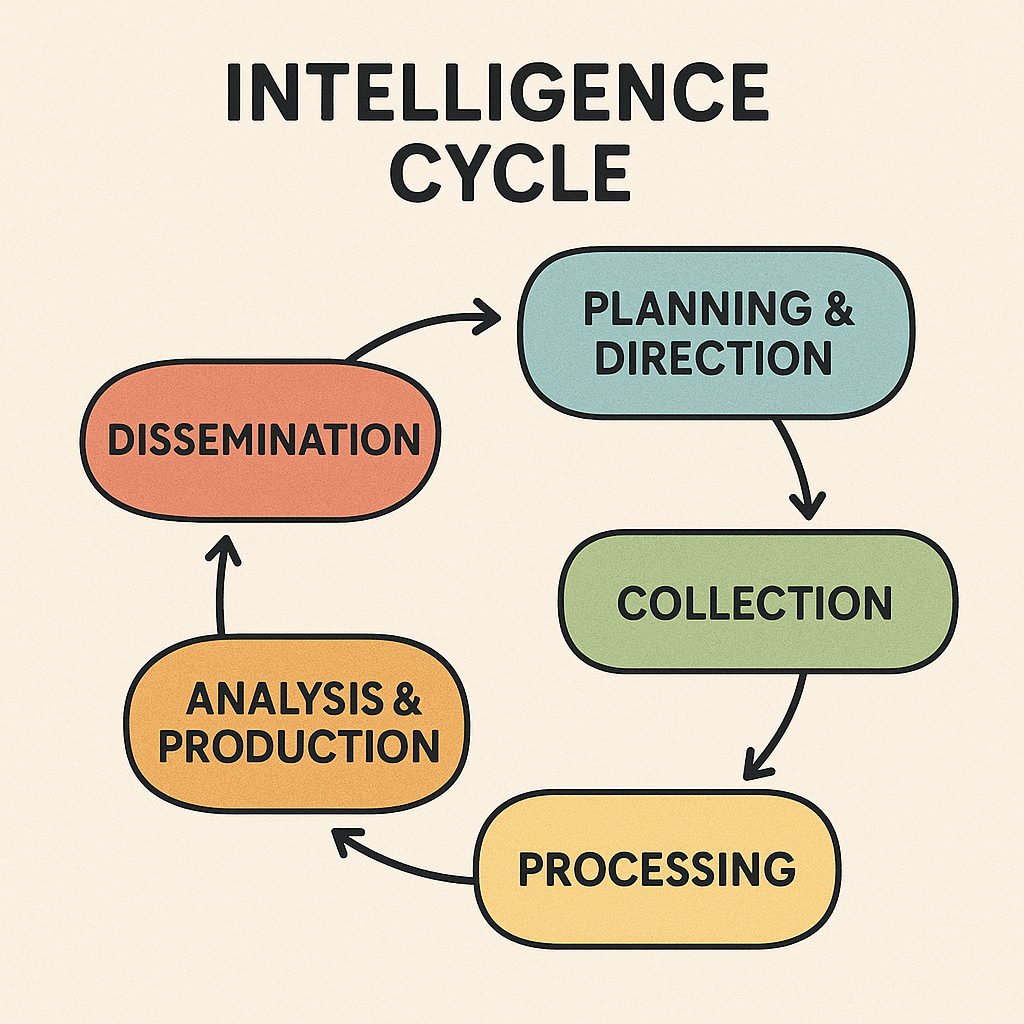The Intelligence Lifecycle Explained

Did anyone else start doing OSINT without knowing the Intelligence Lifecycle?
Only me?
I doubt it. I’m pretty sure a lot of us jumped in headfirst, started tracking down leads, collecting screenshots, connecting dots and never realized we were already working within a framework.
So if you’re reading this and either nodding along or silently Googling “what is the intel lifecycle”… you’re in the right place.
So What Is It?
I don't hear many people talk about the Intelligence Lifecycle in the OSINT space, well at least not in plain English.
But here's the thing: If you've chased down the source of a viral post, mapped someone's digital footprint or organized your findings for a report...you've already used it.
You just didn't call it that.
The Intel Cycle is how professionals in government, military and private sector guide their investigations from START to FINISH.
Think: chaos → clarity.

Let's break it down:
- Planning & Direction – What’s the question? What are you even trying to solve?
- Collection – Gathering raw data, posts, files, maps, records (My favorite part!)
- Processing – Making that mess usable: sorting, filtering, cleaning it up.
- Analysis & Production – Finding the patterns, the meaning, the “so what?”
- Dissemination – Sharing your findings in a way that makes sense to your audience.
It’s not always a perfect step-by-step. Sometimes you double back. Sometimes you pivot. That’s okay! The cycle is meant to guide you, not box you in.
Why You Should Care
(Yes, Even If You're Just Starting Out)
Let's be honest. I know OSINT can feel overwhelming. So many tools. So much data. The lifecycle helps you breathe. It keeps you from drowning in screenshots or getting stuck trying to make sense of everything at once.
It helps you:
- Ask better questions
- Know when to stop collecting
- Avoid getting lost in the weeds
- Deliver something useful at the end
My goal isn't to throw a bunch of theory at you. Over the next few weeks, we'll go stage by stage and talk what this actually looks like in the wild. No jargon.
Just real OSINT work.
Because yeah, "Intelligence Lifecycle" sounds technical.
But once you understand it, it's one of the most useful tools you can carry as an investigator.
💬 I'm Curious
Have you used parts of the intelligence cycle without even realizing it?
Or maybe you're just now hearing about it for the first time?
Drop a comment and share how you approach investigations.
What part of the cycle do you find the hardest or the most fun?
Tag @mrsosint if you’re posting your thoughts elsewhere.
I’d love to see how you work through it.

